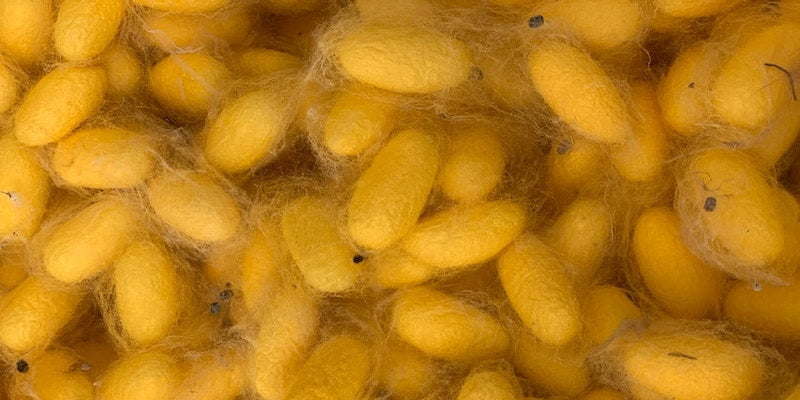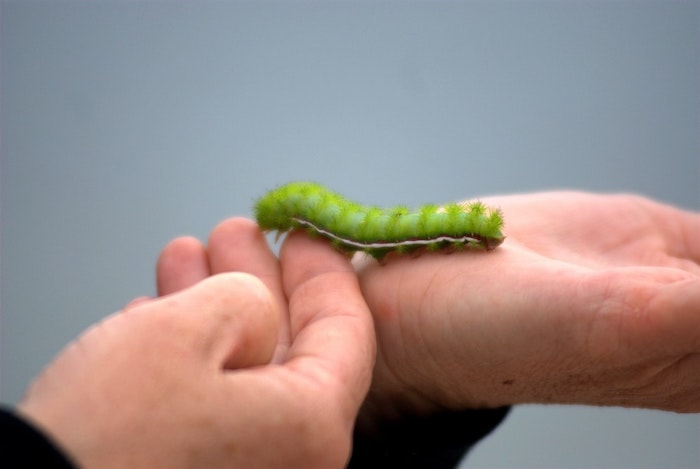The importance of a diversified agricultural sector to the growth of the local economy is one that cannot be overstated. Indeed successive governments have made attempts to wean the nation off the enduring overdependence on fabled cash crops like cocoa, coffee and cashews.
Despite struggling to achieve expansive success in this regard, it is increasingly apparent that cocoa-clearly Ghana’s most viable cash crop could and should have worthy competition from other emerging agric endeavours.
Sericulture, an interesting agric –venture presents a mammoth opportunity for Ghana to tap into. While this agriculture is not new to Ghana, it is important to take a curious peek at what countries like Kenya is doing with Sericulture to gain an improved insight into how to build a profitable industry out of silk farming.
GHANA; SERICULTURE A POTENTIAL GOLDMINE
“Silk is four to 10 times more valuable than coffee, tea and vegetables when grown for export,” said Dr Lusike Wasilwa, a plant scientist at the Kenya Agricultural and Livestock Research Organisation (Kalro).
According to the FAO, global silk demand is growing by 5% annually. The five largest fresh cocoon-producing countries are (in brackets average production of last 4 years in tonnes of per year is reported): China (500,000), India (126,000), Uzbekistan (20,200), Brazil (14,000) and Vietnam (13,000).

From an African perspective, China is the biggest export market for silk cocoons, while India, Italy, Japan, France, and Germany are among the top importers for silk and silk garments. The US is the biggest importer of silk products for housing interiors.
Sericulture (a.k.a silk farming) is the production of cocoons which are used to produce silk. It was introduced in Ghana in 1992, but the industry has not been able to develop into large-scale production owing to a myriad of factors. In recent times however, cocoon and silk processing companies are emerging with the help of experts from around the world.
As far back as 2002, the Food and Agriculture Organisation (FAO) approved a project ‘Sericulture and Silk Processing Development’ and allocated $384,000 to develop the sericulture industry in Ghana. Among others, the project covered the services of international consultants specialised in cocoon production, cocoon processing and silk processing.
The overall objective of the project was to assist small-scale farmers in cocoon and raw silk production through provision of basic techniques and essential equipment and tools for silkworm rearing and cocoon processing while ensuring additional employment and income opportunities available to them.

Presenting a paper years ago in India, Paul K Ntaanu, founder and technical director of the Sericulture Promotion and Development Association (SPDA) the organisation for the development and promotion of the sericulture and silk industry in Ghana, said SPDA has more than 2,500 farmers and industrialists as members.
“Around 16 years ago, silkworm rearing was started on a pilot basis at Akwapim Mampong and now it has spread to other parts of the country such as Yeji, Bogoso, Daboasi, Peki, Prestea, Odumasi-Krobo, Akyem Sekyere, Ankwrasu, Tamale and Koforidua, he said.
According to available information, today’s silk industry is worth about $2 billion a year worldwide, and annual world production is estimated at about 100,000 tons — more than 600 billion cocoons. A single cocoon contains anything between 0.5 and 1.5 kilometres of thread.
The returns are immediate because the whole process takes a month to harvest thus giving farmers’ real-time money within a very short period and it’s not capital-intensive like other farming which requires a lot of farm inputs.

As climate change and low productivity in traditional agri-ventures continue to take toll on small-scale farmers across the country; the push by farmers to switch to new alternative farming methods that are more resilient to weather uncertainties is increasingly gaining pace.
Globally, over 30 countries produce silk, 16 of which are in the Asian continent, accounting for about 90 percent of the total world silk production. India is the second largest producer of raw silk after China and is also the biggest consumer of silk.
Mr. Paul Kwesi Ntaanu, Founder and Technical Director of, Sericulture Promotion and Development Association, once made the audacious claim that “the silk industry is even more profitable than cocoa”
The mulberry tree on which leaves the worms are fed is a drought-resistant plant which grows well in all geographic areas of the country.
He said a farmer could plant 4,000 mulberry trees just as cassava sticks are planted on an acre of land and “at any given time the leaves of the 4,000 trees can feed 80,000 worms which can produce 100 kilos per a season for at least six to eight seasons in a year.”

The significant inroads made since the introduction of sericulture is a soothing development that is in line with perhaps government’s most ambitious policy initiative-to achieve a Ghana beyond aid. If Ghana Beyond Aid will prove successful, it will largely depend on innovative and transformative alternatives like sericulture.
Indeed revamping and strategically positioning Sericulture would naturally speed up efforts by government to diversify export commodities and specifically find worthy competition for Ghana’s primary export cash crop-cocoa.
A local Sericulture industry built on the fulcrum of productivity and just recompense will certainly create an avalanche of job opportunities in Ghana and consequently turn around the fortunes of people, households and businesses.
The time is opportune! The much-publicized Ghana Beyond Aid Policy needs the collective energies of multiple industries to materialise. It is obvious to a large extent that that sericulture-when fully harnessed add considerable steam to this important policy; through the mobilization of local export resources –which will attract plentiful foreign exchange for Ghana.
It is evident that agriculture holds the fortunes of Ghana’s economic transformation, job creation and sustained food security, as it employs close to 45% 0f the active population, majority of who are women (Gss, 2014).
Sericulture, as examples elsewhere have practically proven, creates important linkages and encourages investment in a way that can have strong multiplier effects on growth. It is crucial to excessive textile importation, not only because it stimulates increased local production but also due to its potential to create wealth for smallholders and rural communities.
Since sericulture is largely unorthodox to the Ghanaian farmer, training is crucial to ensure a steady flow of expertise. Indeed without a conscious effort to transfer the requisite skill-set for the venture to farmers, the potential for diversification and its attendant benefits may perpetually remain a mirage.
Modern sericulture management techniques that have proven successful elsewhere must be introduced to grow sericulture start-ups and consequently lead to improved livelihood for farmers who are keen on exploring the sericulture enterprise.
Training efforts must be backed by the provision of extension services and access to markets and access to credit, as well as supporting organizations and farmer cooperatives. This will ensure that the impact of training schemes is felt by the farmers- and in extension the industry.
A modern training module that takes into account contemporary dynamics is crucial to sustaining the interest of a few ambitious individuals and entities that have made the brave decision to explore the relatively unknown world of sericulture. This will naturally incite interest and woo more people aboard the sericulture bandwagon.
Capacity-building efforts must be calculated rather than rushed, and must involve a lot of stakeholder consultations. This will ensure positive outcomes that will ultimately culminate in a general enhancement in the ability of the farmer to rely on improved knowledge for better output.
Agriculture is and looks poised to remain entrenched as the bedrock of the Ghanaian economy-at least for the foreseeable future.
A renewed commitment by stakeholders to promote diversification through sensitisation workshops and similar initiatives will go a long way to help our farmers –many of whom are experiencing low productivity owing to climate change and its attendant dynamics.
For the emerging breed of silk farmers who are clearly making heart-warming inroads, practical efforts must be made to provide avenues that will ensure progressive knowledge acquisition. This, if genuinely done, will boost sericulture and ultimately help exhaustively exploit the vast potential that this interesting form of agriculture presents.
According to International Sericultural Commission Sericulture was formally introduced in Ghana in 1992 leading to the establishment of the Silk Farmers Association, and later a silk factory in 2002 with support from the FAO. This boost led to an increase in raw cocoon production but is now dwindling due to numerous challenges facing the silk industry.
Another important wild silkmoth, Gonometa sp. (Lepidoptera: Lasiocampidae) was found on Acacia sp. in northern Ghana. Brong-Ahafo region had the highest number of silk farmers.
In the past, Kente cloth in Ghana was made from silk yarn imported from abroad. However, mulberry sericulture was formally introduced in Ghana in 1992 by P.K. Ntaanu which led to the establishment of the Silk Farmers Association, and later a silk factory in 2002 with support from Food and Agriculture Organization (FAO). There was an increase in cocoon production and farmers participation when sericulture started in Ghana.




















Thank you so much for this enlightened article. I’m overwhelmed by the rich information dished out.
Please, how do I locate a sericulture farmer here in Ghana? I’m really interested and wouldn’t mind going to the farming.
You can kindly reach out to me via by mail if you see this.
Thank you very much!
I want to start to cultivate silk. How do I go about this?
I am looking for mulberry silkworm eggs foem Kenya I can be contacted via my WhatsApp number +233245402379
I want to start cultivating silk, what’s the way forward
my company is very much intrested in Ghana doing business of Sericulture By mulberry